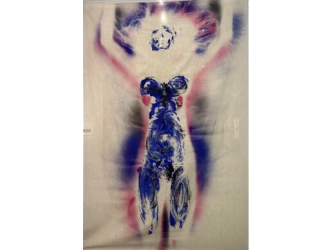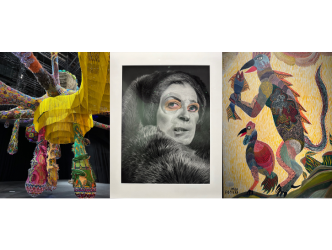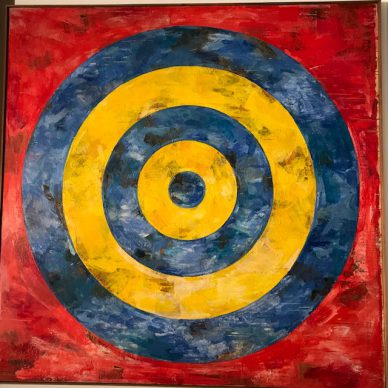Many fairs
Between the end of August and the beginning of September there are fairs of a good standard taking place in Marseille (Artorama), Copenhagen (Chart), Monopoli in Puglia in Italy (Italics), New York (The Armory Show and Independent 20th Century) and also for the first time in Seoul (Frieze Seoul). That’s to say, the offerings from the contemporary art galleries of today broadly span the global landscape.
Profusion of offerings

Galleries are multiplying, and with them the profusion of offerings from the work of artists placed on the market. At the last Basel show, considered to be the most substantial and highest quality in the world, there were no less than 289 participating galleries, and this is due to be followed by the next big new thing, its cousin Paris Plus which will be replacing the Fiac in Paris and will open on 20 October 2022.
Artificial intelligence
For the art lover motivated by an international outlook, the real issue may now lie in accessing artworks, whether geographically close or distant, which match their own affinities. Can artificial intelligence help with this?
Hélène N’Guyen Ban
This is what the French entrepreneur and collector Hélène N’Guyen Ban thinks. She lives between Paris and London and co-directed between 2013 and 2019, with Victoire de Pourtalès, VNH, a gallery in Paris in the Marais, which had previously been the historic headquarters of Yvon Lambert’s gallery. After having sold the space to David Zwirner’s multinational she’s launched herself into a new challenge: Docent. This is an app conceived by French designers in English, with an international remit using French mathematical excellence. It’s meant to present its users with contemporary artworks of high quality, but which correspond to the tastes of its subscribers. But it’s not so simple.
Mathieu Rosenbaum
As Mathieu Rosenbaum, co-founder of Docent, professor at Paris’s Ecole Polytechnique, and winner of the European Louis Bachelier prize for mathematics in 2020 and the “Quant of the Year” award in 2021, explains: “We have modelled algorithms in the fields of football or finance but in the case of art I quickly understood that it would involve dealing with more than images.”
Artistic recommendations
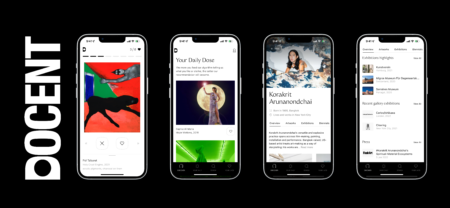
The venture began in 2020 and the Docent team is made up of 20 people, seven of whom are solely focused on artistic recommendations. “For almost a year our art historians initially analysed no less than 10,000 contemporary artworks and the criteria that could be associated with them. 40 visual criteria were identified such as colours, shapes, but also emotional responses such as joy or light. Each artwork has been associated with an algorithm.
Contextual data
Furthermore each one has also been qualified according to contextual data (there are around 350 of them) such as the artist’s nationality, genre… The ensemble of this data when put together enables us to establish links but also the ‘distance’ between the works presented,” explains Mathieu Rosenbaum. “We are able to present not only works that have clear commonalities but also to suggest others which in different respects do not seem so distant from them.
Opposite of Netflix

We are in fact the opposite of a Netflix for films or a Spotify for music, which establishes a profile type for the user that is impacted with every request. Our recommendations are more personalized. The interesting thing here is that we are inventing a new model.” The idea, adds Hélène Nguyen Ban, consists of a form of “machine learning” for human functioning, meaning that it becomes autonomous. It is a way of quantifying and qualifying taste. Our objective also consists of taking contemporary art lovers outside of their comfort zone.”
Free for collectors
For the time being Docent is free for collectors but any request to access it must be accepted by the administrators. The version is therefore still in its trial period, while awaiting a fully operational format in 2023. As a first phase 60 galleries originating from 25 countries who enjoy an excellent reputation have been selected from all over the world, from the Quynh gallery in Ho Chi Minh City, a leading site in Vietnam, to the high-profile Clearing in New York and Brussels, or Sadie Coles in London.
Between 1000 and 500,000 euros

The artworks they present are on sale for on average between 1000 and 500,000 euros. Each art lover who subscribes is presented, by way of introduction, with an opinion questionnaire which is meant to lead them to up to eight artworks according to their taste. Next, every day four works are suggested to them, what the site calls their “daily dose” of contemporary art, which they can “like”. Each one is documented, among other things, by texts provided by the galleries or written by specialists at the Goldsmith Centre for Contemporary Art in London, a partner of the website. “It takes around a week to start to determine the user’s taste,” explains Mathieu Rosenbaum. When a collector likes an artwork, it is then suggested that they contact the gallery directly.
Business model
Docent’s business model is not yet definitively fixed, but Hélène Nguyen Ban imagines it will involve asking the galleries for a commission on the transactions and membership fees.
On the question of works of art being perceived solely through a digital medium, Hélène Nguyen Ban responds that the vast majority of pieces bought at fairs are purchased ahead of the opening and this is based on sending photos. “The Covid period has normalized approaching art online.”
Unique
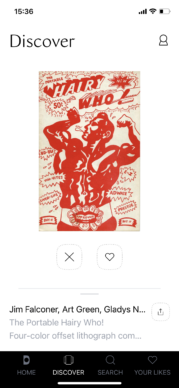
Docent is, for now, a unique formula in the field of contemporary art.
Support independent news on art.
Your contribution : Make a monthly commitment to support JB Reports or a one off contribution as and when you feel like it. Choose the option that suits you best.
Need to cancel a recurring donation? Please go here.
The donation is considered to be a subscription for a fee set by the donor and for a duration also set by the donor.

